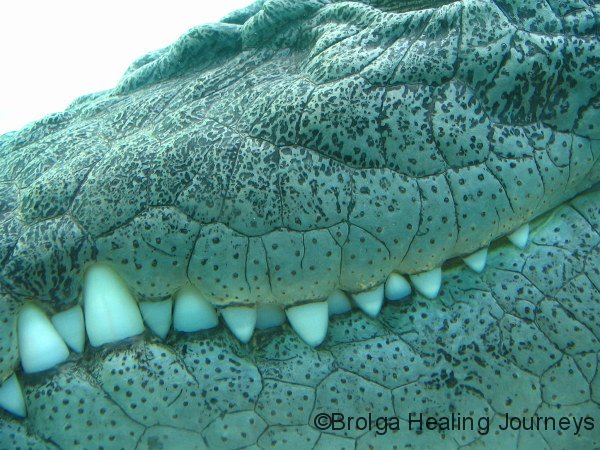Crocodiles

Most of us have a fascination with crocodiles, probably because these prehistoric creatures have a tendency to eat people. The stories of unsuspecting tourists and careless locals being taken by ‘Salties’ are enough to send a chill down your spine. Saltwater crocodiles are known to observe their potential prey over many days, demonstrating cunning, patience and, something rarely acknowledged, a degree of intelligence. They are said to observe the patterns of their would-be prey, such as the time of day they come to the waterhole in which the crocodile lurks, and other habits, such gathering water or drinking from particular spots along the bank. For example, if a camper wanders down to collect water from the waterhole at 7am daily, from the same spot, this will be duly noted! All this information is gathered with the intent of making that violent explosion from the water all the more likely to secure their meal.
But crocodiles are much more than just cold-hearted killers, though they are so efficient in what they do, they have been virtually unchanged for tens of millions of years. The female crocodile demonstrates a strong maternal instinct, herding her newly hatched young, and protecting them until they are able to fend for themselves. When calling their mother, the young make a sound very similar to that of baby birds.
The freshwater crocodile is smaller and less dangerous than its so-called saltwater cousin. The freshwater croc rarely attacks humans, usually only if threatened or if you blunder into its nest along the banks of rivers or billabongs. One thing to bear in mind however, is that saltwater crocodiles are often found in freshwater rivers, especially after the wet season. It is the terrain only which limits their migration inland during the wet, not the salinity of the waterways.
There are many places in the north where we would never contemplate swimming. Others are regarded as safe (well, safe-ish) with signs posted to the effect that every effort has been made to check that it is salty-free, but that you swim at your own risk. Hardly something to instill confidence!
We are not experts in telling freshwater from saltwater crocodiles. In some areas, such as Windjana Gorge, only freshwater crocs are found, so we are confident there in our identification. Further north, especially near Wyndham, there are crocs everywhere and the terrain fairly flat, so we were uncertain of what croc was where, and therefore very cautious indeed. Along one remote track near Wyndham we came across a billabong named Crocodile Hole, late in the afternoon. It seemed an idyllic spot, a lovely waterhole surrounded by lush vegetation, waterbirds along the bank, and rocks just breaking the surface across the shallow waters. Then we realised that many of those rocks were in fact pairs of eyes watching us, contemplating us as their evening meal. In the laconic ways of the Kimberley, the local travel brochure simply says that swimming isn’t recommended at Crocodile Hole! Perhaps they reasoned that the name was warning enough.




















sooooo cool!! I have never seen a wild croc, must be such a thrill! Loved the article, too, I thought salt water crocs only hung out in salt water .. now I know better!
Thanks Carly. Yes – I think they’re so cunning they’ve tricked us into thinking they don’t go near fresh water!